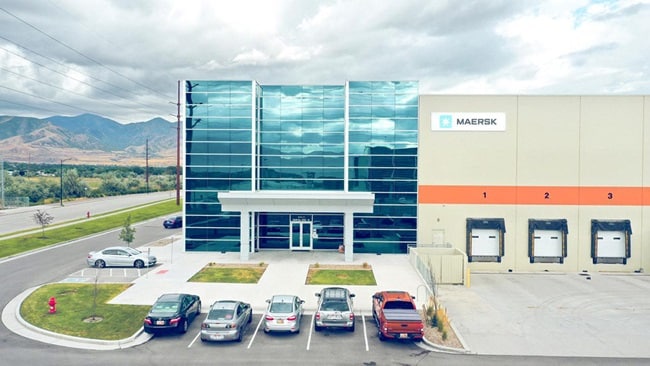Managing logistics in-house can be both complex and time-consuming. Perhaps you're looking for a company that can handle some aspects of operations for you? Things like inventory management, transportation, or maybe reverse logistics. That’s where third-party logistics (3PL) providers come in.
Here’s a short guide on selecting the perfect 3PL partner for your business.
Four steps to choosing the right third-party logistics (3PL) provider
Entrusting your operations to a third-party logistics (3PL) company is a significant business decision. And choosing the perfect one involves more than just a leap of faith. Here’s a breakdown of aspects you must consider:
Step 1. Define your needs as a customer
Business goals: What are you hoping to achieve by outsourcing logistics (e.g., cost reduction, faster deliveries)?
Order volume and product type: This will influence the type of warehousing and fulfilment services you need.
Target market: Consider if your 3PL needs international shipping capabilities.
Key questions to ask
- What specific logistics or supply chain services do i require? (warehousing, transportation, distribution, etc.)?
- Are my products subject to any specific storage or transportation requirements (e.g., temperature control)?
- What is the geographic scope of my distribution network?
- What is my average order volume, and how much variability does it have?
Step 2. Research potential 3PL service providers
Industry experience: Look for a 3PL with expertise in your specific industry, with similar products, or on similar shipping routes.
Service offerings: Ensure their services align with your needs (warehousing, fulfilment, transportation, etc.).
Technology: Does their technology infrastructure integrate seamlessly with your existing systems?
Reputation and customer reviews: Research online reviews and ask for references to gauge a company's reliability and customer service.
Key questions to ask
- Does the 3PL have experience in my industry or with similar products?
- Do they have a proven track record of success on shipping routes relevant to my target market?
- Can they handle all the required logistics services (warehousing, fulfilment, transportation, etc.)? Do they offer any value-added services?
- What technology do they use for order tracking and visibility? Is their technology compatible with my existing systems (inventory management, order processing)?
- What do online reviews say about their customer service and performance? Can they provide references?
- How does the 3PL handle customer service inquiries and resolve issues?
Step 3. Evaluate and compare
Request quotes: Get proposals from shortlisted providers outlining their service offerings, pricing structures, contracts, and terms and conditions.
Ask questions: Don’t hesitate to ask detailed questions about their capabilities, scalability, and contingency plans for disruptions.
Facility tours: Schedule tours of their warehouses and fulfilment centres to assess their infrastructure and operations.
Key questions to ask
- How is pricing structured (flat fee, per order, per item, etc.)? What services are included in the quote, and are there any hidden fees?
- What are the service level agreements (SLAs) for key metrics (fulfilment times, inventory accuracy)?
- How does the 3PL handle inventory management and ensure stock accuracy?
- Does the 3PL have the capacity to handle my current and future growth projections? How do they ensure scalability to meet fluctuating order volume?
- What contingency plans do they have for disruptions like natural disasters or transportation delays? Do they offer insurance coverage?
- What are the security measures, warehouse layout, and fulfilment processes of 3PL?
Step 4. Finalise and make your decision
Cost is important, but not everything: While pricing matters, prioritise factors like reliability, scalability, expertise, and their ability to adapt to your future needs.
Clearly define Service Level Agreements (SLAs): Outline performance expectations for metrics like order fulfilment times and inventory accuracy.
Long-term partnership: Choose a 3PL you see as a long-haul partner, not just a one-time service provider.
Communication is key: Maintain open communication with your 3PL to ensure smooth collaboration and address any issues promptly.
Key questions to ask yourself
- What value proposition does the 3PL offer regarding reliability, scalability, and adaptability to my business growth?
- What are the performance expectations from this partnership? Have they outlined metrics in their SLA, like fulfilment times, inventory accuracy, on-time delivery rates?
- What is their process for handling inquiries and resolving issues?
- Does the 3PL demonstrate a willingness to collaborate with me? Can this 3PL be a long-term partner that aligns with my business goals?
READ MORE: What is lead logistics?
Ready to start exploring 3PL providers?
Maersk’s end-to-end lead logistics solutions offer resilience and digitisation to scale your business operations to new heights, with our 115+ years of global logistics experience in over 130 countries.
Discover the benefits of Maersk’s Lead Logistics services.
注册订阅物流时事通讯
接收新闻和见解,帮助您驾驭供应链,了解行业趋势,并制定物流战略。
感谢您注册
发生意外错误
很抱歉,我们无法完成您的新闻通讯订阅注册。












